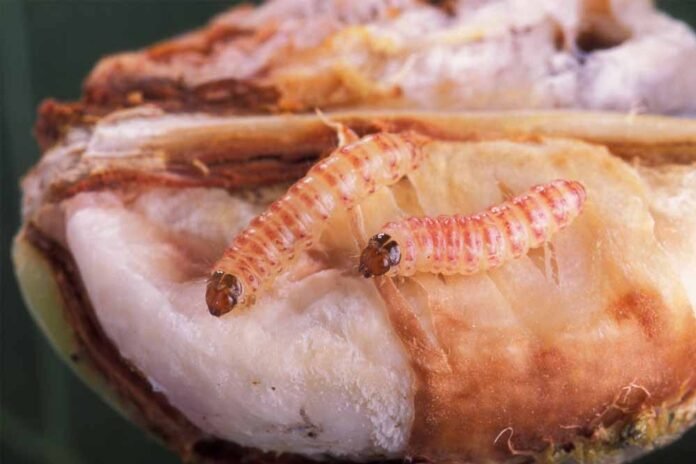Despite the application of new technologies, the pink bollworm has taken a toll on cotton, production in India.
Between 2000-01 and 2013-14, India’s cotton production, in terms of lint, almost tripled from 140 lakh to 398 lakh bales of 170 kg each.
Thanks to Bt technology that was introduced in India in 2002. Indian farmers began planting genetically modified (GM) cotton hybrids incorporating genes isolated from a soil bacterium Bacillus thuringiensis or Bt. As the share of Bt hybrids in the country’s area sown under cotton touched 95 percent, average per-hectare lint yields more than doubled from 278 kg in 2000-01 to 566 kg in 2013-14.
However, both production and yields started falling after 2013-14, to 343.5 lakh bales and 447 kg/hectare in 2022-23. Pectinophora gossypiella or pink bollworm (PBW) caused the damage. The Bt toxins were originally supposed to protect both the Helicoverpa and PBW caterpillars that burrow into the bolls or fruits of the cotton plant in which the lint and seeds grow.
Cotton has a roughly two-thirds share of India’s total textile fiber consumption. Not as well-known is cottonseed being the country’s third largest domestically-produced vegetable oil (after mustard and soybean) and its second biggest feed cake/meal (after soybean).
Experts said PBW wasn’t a serious pest previously. It typically appeared in the crop’s later stages after the first picking, while confined to central and southern India. But now, the infestation starts as early as 40-45 days after sowing at the initiation of flowering.
PBW is a monophagous pest that feeds mainly on cotton. This is unlike Helicoverpa which is polyphagous, with alternative hosts from arhar (pigeon pea), jowar (sorghum), and maize to tomato, chana (chickpea), and lobiya (cowpea).



